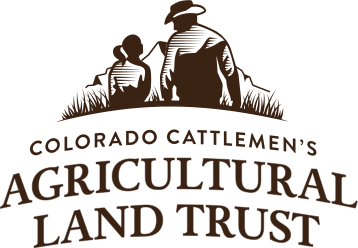Hitting the Road From our Desks: A Different Way to Monitor CCALT Held Conservation Easements
An interview with CCALT Project Manager, Brad Cory

Each year, CCALT staff spend a large portion of their spring and summer monitoring every CCALT conserved property to make sure that the terms of the conservation easement are being upheld. That means all of our properties must be visited each year. This year, due to the COVID-19 virus, our team made the decision to remotely monitor our conservation easement portfolio with the use of satellite imagery. Though we love our annual summer monitoring season and the chance to catch up with our landowners on some of the most beautiful ranchland in the state, we recognized that rural communities and multigenerational families are especially at risk for COVID-19. While this type of monitoring is not our preferred choice, we are making it work in 2020 and are excited to share what that transition looks like with you!
How does remote monitoring work?
For our landowners, 2020 monitoring will feel similar to our standard monitoring program. Landowners will each receive a call in which a CCALT staff member will ask our series of annual monitoring questions. The difference this year will be that instead of scheduling a time to come and tour the property in person, CCALT stewardship staff will be reviewing satellite images of each conserved ranch or farm.
Will monitoring via satellite be as effective as in person monitoring?
Overall, the answer is no. While remote monitoring will allow us to fulfill our monitoring commitments, there is an equally important outcome that will be missed: the opportunity to meet our landowner partners face to face, shake their hands, and talk about the previous year and their hope for the future. CCALT staff is passionate about the work we do, and having insight into local challenges allows us to come up with new ways in which we can offer additional value to our landowners and the communities in which they live.
Is satellite monitoring something CCALT will continue in the future?
CCALT has never utilized satellite imagery for monitoring before, so we are still in the process of evaluating how well it works. We benefit from the face to face interactions that come with our “on the ground” monitoring visits. We also believe an investment into personal interaction reduces potential conflicts related to conservation easements. In fact, CCALT’s internal policies far exceed national monitoring standards: we limit ourselves to remotely monitoring a specific property once every three years, while national standards allow remote monitoring four out of five years.
In addition to our desire to meet with our landowners in person each year, satellite imagery is expensive. To stay within our budget, CCALT had to commit “all or nothing” in regards to remote implementation this year. We could not afford both the satellite imagery and to send our fleet of vehicles and staff travelling across the state.
It is difficult to see a path to widespread remote monitoring of the same places year after year. However, we will continue to explore our options and if things go smoothly this year we may see some remote monitoring built into our program for future years.
How will CCALT adjust to not meeting landowners in person?
CCALT strives to speak with every one of our landowner partners each year. In 2019, we successfully connected with 98% of our landowners (HUGE thank you to our landowners who made this possible)! Due to remote monitoring, we feel an added importance in making sure we connect with all of our landowners in 2020.
Is there anything else we need to know about this new monitoring system?
CCALT stewardship staff is always striving to improve and we hope you’ll never hesitate to call us with questions or comments related to our monitoring work. We are eager to receive feedback related to remote monitoring in 2020, and we hope your feedback will allow us to better evaluate how best to utilize remote monitoring methods in the future.
Megan Knott is CCALT’s Director of Stewardship and Brad Cory is in charge of CCALT monitoring in 2020. For monitoring related questions, Megan and Brad can be contacted vie email at megan@ccalt.org or bcory@ccalt.org, or by phone at 303.225.8677.

